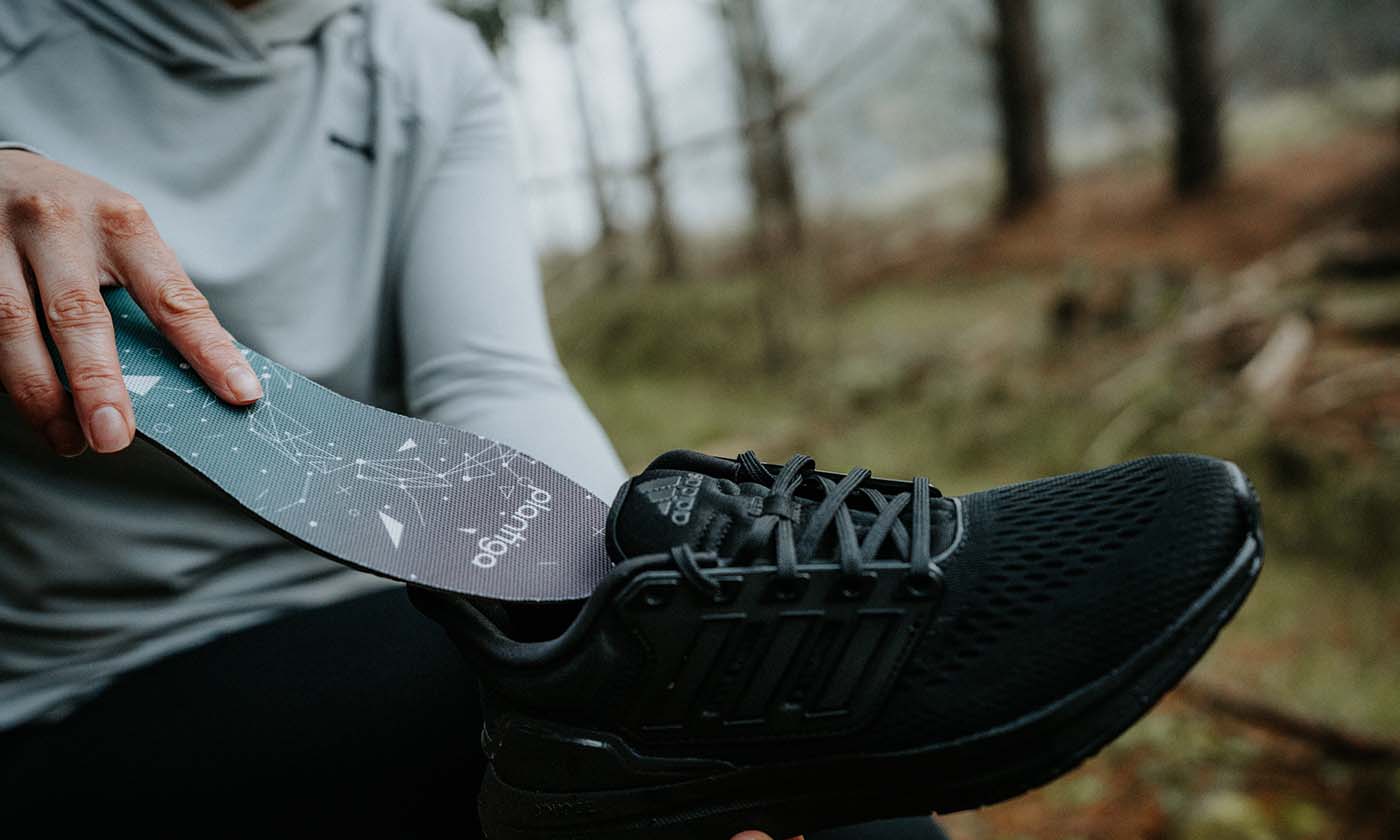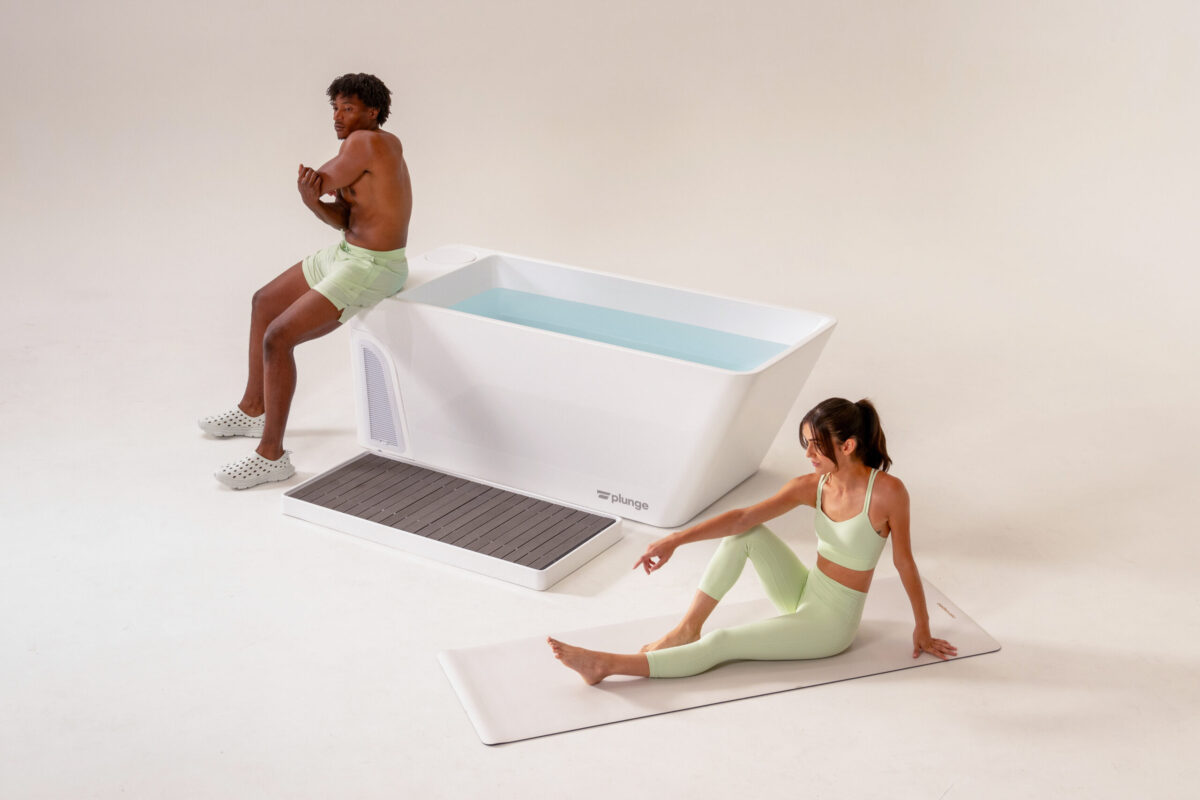In this Q&A, you’ll hear from Quin Sandler, CEO of Plantiga, the creators of the smart insole that measures biomechanics in the real world. Quin shares how by becoming aware of habitual movement patterns, professional athletes, the military, and clinical practitioners are preventing injuries while simultaneously accelerating lower-body rehabilitations.
Can you tell us about what you’re working on at Plantiga?
Quin Sandler: Plantiga is a smart insole system that accurately measures human gait and biomechanics, providing real-world insights for practitioners, organizations, and individuals.
The thin shoe insoles work by recording the accelerations and rotations of the foot during running, walking, and jumping using an IMU sensor. Then, drawing on this data, our software provides biomechanical metrics for insights into movement habits and how those relate to injury risk, prevention, and rehabilitation.
Unlike many other methods for assessing movement health, Plantiga insoles are unique, as they measure movement in the real world. So, rather than using force plates (which don’t measure movement directly), apps that assess function based on specific movements, or optical tracking software that uses a camera to assess movement patterns, you just put on your shoes and go about your day — then, we take care of the rest.
How did you come up with the idea? What key insight led you to pursue this opportunity?
QS: The idea originated with my late father (and co-founder), Norman McKay. After spending years in gait labs, he saw the potential for this type of rich human movement data. But unfortunately, this type of analysis was typically confined to clinical and research settings. So, we set out to change that by providing a means for more people to improve their health through an awareness of the way they move.
To that end, we focus on two main ideas: First, establishing movement as the next foundational “vital sign.” And second to that, practicing a healthcare delivery system that enables practitioners to monitor their clients’ biometrics on-site and on the go.
The focus for us is always on improving outcomes. Can we improve a person’s life throughout their ACL rehab? In managing Parkinson’s?
With Plantiga, we’re able to flag risks for potential injuries, accelerate rehabs, and provide easy-to-understand metrics (on progress or regress) that keep clients motivated and on the right track — all with the end goal of improving their lives through an understanding of habitual movement.
How did you turn your idea into a company?
QS: With a small initial team, we hacked together a prototype sensor insole that landed us pilots with the LA Lakers and Seattle Mariners. At the same time, we were connected with an incredible network of investors through an incubator out of the University of Toronto called the Creative Destruction Lab. On the back of those initial pilots, we were able to raise a $2M pre-seed round through the CDL network.
Having secured that capital, we were then able to build v1 of our first commercial product. We also acquired our first customers in the professional sport, military, and physical therapy fields. And after learning about their experience, we discovered that nearly all of them were using the Plantiga system to either prevent injuries or improve rehabs after one had occurred.
That’s when we knew we were onto something. At that moment, it felt like we had gone from zero to one.
How big can this get? What’s the addressable market and how do you go about capturing it?
QS: There is a global mobility health crisis, and it’s growing by the year.
Currently, 2B people are managing movement-related pain, with musculoskeletal issues (the leading cause of lost workdays in the US) affecting one in two Americans. On top of these issues, there are also roughly 1B people managing a neurological disorder, many of which affect the body’s ability to generate movement.
Therefore, to help as many as possible—while unlocking the potential value for providers, payers, and insurers—our five-year plan is to become the standard of care for all movement-related disorders and conditions. For that, we’re continuing to build and develop a medical-grade product with the goal of gaining FDA approval.
Who is the core customer? How are you acquiring customers? And how will you grow the customer base?
QS: Today, our customers can be broken down into three categories: 1.) clinical and sport practitioners (such as physical therapists, team trainers, and orthopedic surgeons); 2.) researchers in academia, clinical trials, and therapeutics; and 3.) individuals managing movement disorders and/or rehabilitating significant lower body injuries like torn ACLs, ruptured Achilles, and knee replacements.
To date, all of our major customers in professional sports, universities, and clinics have come through referrals. And while that’s been great, we’re making a push to further market our services by creating relevant content, attending and presenting at conferences, and doubling down on research.
We’re also constantly striving to improve our product by supporting practitioners with in-clinic or on-site testing, as well as helping them to expand their reach and connect with their clients in between visits. Additionally, we’re experimenting with ways of partnering with those practitioners by transitioning our clinical customers into both channel partners and resellers of the system.
Ultimately, our aim at Plantiga is to become the voice of the movement-health space. And it’s a position we feel is both ripe for the taking and one that we’re uniquely suited to fill.
Looking at your road map, what are some of the milestones you’re targeting over the next 3-6 months?
QS: Plantiga has some pretty exciting things coming down the pike.
First, after two years of testing and developing, we’re launching our Gen5 hardware in January. The new hardware is 40% smaller, has a longer battery life, and is more durable in the field — ultimately making it a more powerful and reliable product.
Second, we’re launching an overhauled Tiga Insights dashboard aimed at rehabbing musculoskeletal (MSK) injuries and managing movement disorders. The relaunch includes updates with our suite of tests and advanced reporting (with population norms from our database), as well as new types of data visualization alongside AI-powered insights.
Finally—and perhaps my personal favorite—is the launching of new software that allows our partners to monitor their patients/clients/athletes at home. This functionality enables practitioners to provide turn-key, virtual care that tracks movement health, includes in-app chatting, data-driven insights, and more.
Needless to say, I’m pumped for the next six months.
Anything else you’d like to share with readers?
QS: We’re always open to new partnerships with practitioners, researchers, and individuals in our space. So, if you’re reading this, have ideas for collaboration, or are even interested in working for us, please reach out at partnerships@plantiga.com.
We’d love to hear from you and look forward to connecting.
Related reading from Fitt Insider:
Issue No. 134: The Business of Movement Health
Wearables Unlocking Athletic Performance Data
If you’re interested in having your company featured in our Startup Q&A series, send an email to team@fitt.co.
 Plantiga
Plantiga


